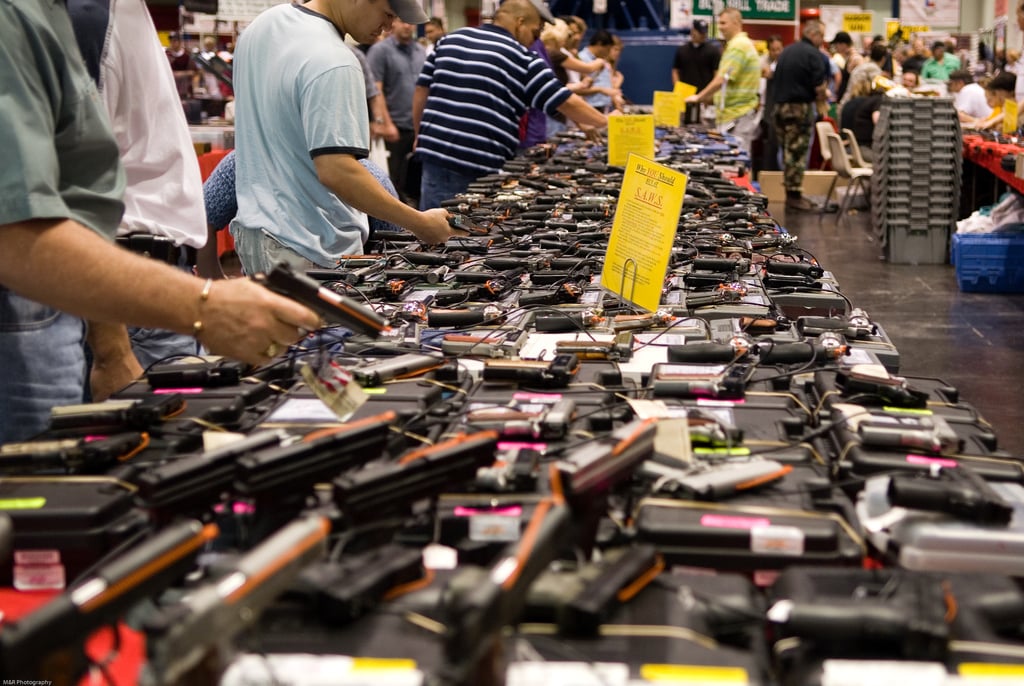Even with an estimated 300 million firearms in civilian hands, research on guns and gun violence in America is disproportionately underfunded. In the pool of data that does exist, one number comes up again and again: the “40 percent” statistic, or the percentage of people who obtain a firearm without going through a background check. Proponents of tougher gun laws argue that the large, so-called private sale loophole makes it easier for guns to fall into dangerous hands. Critics of the statistic argue that it’s outdated and misleading. At a town hall meeting earlier this month in New Hampshire, the number became the source of a minor campaign kerfuffle when Democratic presidential contender Hillary Clinton told a crowd, “Forty percent of guns are sold at gun shows, online sales.” Her exclusive emphasis on sales (rather than all the ways a gun can change hands) got her dinged by the Washington Post Fact Checker blog, which gave the remark a rating of “three pinocchios.”
Amid the controversy, a team of Harvard researchers are fast-tracking a major update to this fundamental gun debate statistic. Pulling data from a forthcoming study on gun ownership conducted by the university’s Injury Control Research Center, the scholars have landed on a figure set to corroborate the earlier finding: Harvard’s Dr. Deborah Azrael tells The Trace that of 2,072 gun owners the researchers surveyed, roughly 40 percent said they’d acquired their most recent firearm (through a sale or transfer) without going through a background check.
Azrael was not ready to provide specific numbers, as the research is still being readied for formal release, and those figures will merit thorough examination once they are made public. But here’s how she says the numbers stack up about how Americans acquire their firearms.
- Roughly 70 percent: Gun owners who purchased their most recent gun.
- Roughly 30 percent: Gun owners who did not purchase their most recent gun, instead obtaining it through a transfer (i.e., a gift, an inheritance, a swap between friends).
- Zeroing in on the population of gun buyers, about 34 percent did not go through a background check.
- Among the gun owners who got their firearms through a transfer, roughly two-thirds did not go through a background check.
Add it up, and it works out to:
- Roughly 60 percent: the share of gun owners surveyed who did go through a background check when they obtained (through sale or transfer) their latest gun.
- Roughly 40 percent: the share of gun owners who did not.
The Harvard team conducted its survey this summer and had planned to release the full results in the coming months. It decided to move up its disclosure of some of its preliminary findings, including the figure on sales and transfers conducted without government screening, as gun policy returned to the national spotlight. “We’ve moved it up in priority because it’s been such a hot issue,” says Azrael.
The original 40 percent figure can be traced back to a 1996 report titled “Guns in America,” which publicized a 1994 survey that found roughly four in 10 gun owners had acquired firearms from an unlicensed source over the past two years. It gained its current prominence in the aftermath of the Sandy Hook Elementary School shooting, when the statistic became a frequent element of political speeches and news articles. “Nobody had paid the least bit of attention to it until then, so it was kind of funny to have this old statistic suddenly take on such importance,” says Philip Cook, a professor at Duke University who co-authored the 1996 report.
As lawmakers used the study to push for more legislation, reform opponents and critical journalists pointed out that the data was nearly 20 years old and drawn from a small sample size of 251 respondents. Those criticisms have endured: A post from August on a National Rifle Association website calls the figure “false” and “widely debunked.” Others, like the Post’s Glenn Kessler, point out that the figure is often misused: Clinton stated that 40 percent of guns are sold without a background check at gun shows and online, but the 1994 survey arrived at that number by counting private sales along with gifts, inheritances, and any other unregulated transfers.
Azrael says that when results from the survey are published, they’ll note the distinction between gun sales and gun transfers, and provide more information on where these unregulated exchanges take place. In total, she estimates Harvard’s findings translate to 20 million guns that have been obtained without a background check.
“We’re talking about millions and millions of guns that have been [sold or] transfered without anyone making sure the recipient was legally permitted to have one,” she says. “That number gives me more pause than the percentages.”
[Pboto: Flickr user M&R Glasgow]

